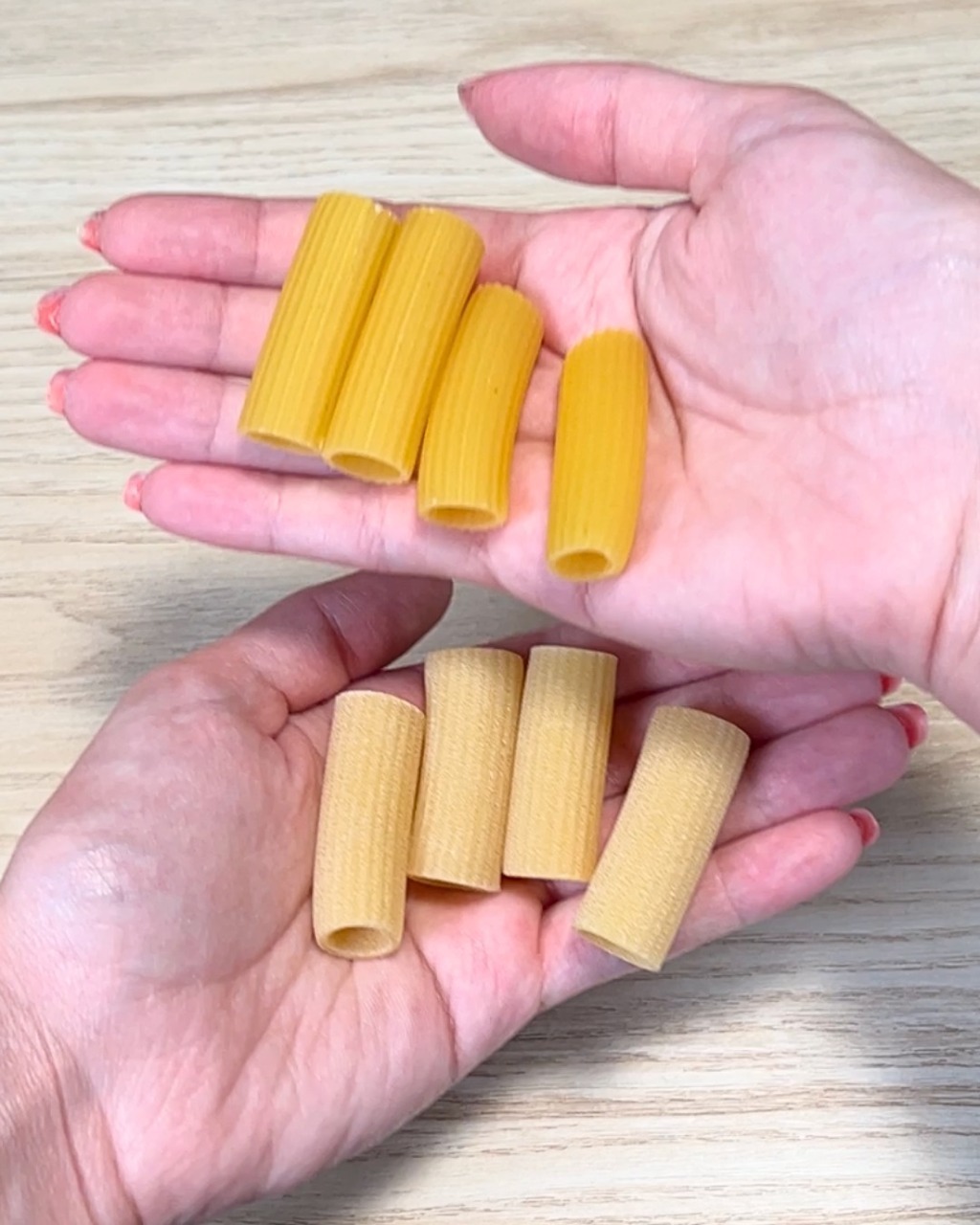ADVERTISEMENT
### **Red and Pink Pasta: Sweet and Savory Delights**
Red pasta, typically made with the addition of tomatoes, beets, or red peppers, offers a visually striking contrast against the classic golden hue. The color adds vibrancy and pairs well with robust, tangy sauces. Tomato-based sauces, such as marinara or arrabbiata, harmonize beautifully with red pasta, making for a deliciously vibrant dish.
#### **Best for:**
– Tomato-based sauces and bolognese, where the red pasta can elevate the color of the sauce and create a beautiful contrast.
– Dishes with roasted vegetables, as the deep red tones enhance the visual appeal of the meal.
—
### **Black Pasta: Rich, Bold, and Luxurious**
Black pasta, often infused with squid ink or activated charcoal, is a striking choice for adding an air of sophistication to your dishes. The dark color brings out a dramatic contrast with lighter sauces, creating a visually stunning presentation. The unique, briny flavor of squid ink adds a subtle seafood taste, making it perfect for pairing with shellfish or seafood-based sauces.
#### **Best for:**
– Seafood dishes, particularly those featuring shellfish, clams, or shrimp, where the black pasta enhances the flavor profile.
– Elegant pasta dishes that require a bold, unique look and a sophisticated flavor.
—
### **Whole Wheat Pasta: Nutty and Wholesome**
Whole wheat pasta, with its brownish hue, is made from whole grain flour, which contains the bran and germ of the wheat. This variety has a slightly nutty, hearty flavor and pairs well with rich, savory sauces. Whole wheat pasta provides a healthier alternative while still delivering the satisfying texture and flavor of traditional pasta.
#### **Best for:**
– Pairing with earthy sauces such as mushrooms, pesto, or hearty vegetable-based sauces.
– Dishes where a nutty, rustic flavor complements the ingredients, such as vegetable stir-fries or meatless pasta meals.
—
### **Purple Pasta: Vibrant and Fun**
Purple pasta is often made with purple cabbage, beets, or blueberries, which naturally tint the dough a vibrant purple shade. While the color adds a fun, playful twist to any pasta dish, it also offers a mild sweetness depending on the ingredient used. This color pairs well with both savory and sweet dishes, making it a versatile choice for experimenting with flavors.
#### **Best for:**
– Pairing with lighter, cream-based sauces or simple olive oil dressings, where the sweet notes of the purple pasta can shine.
– Dishes where the pasta acts as a visual focal point, such as pasta salads or special occasion meals.
—
### **Brown Rice Pasta: Gluten-Free with a Nutty Flavor**
Brown rice pasta, which has a beige or light brown color, is a popular gluten-free option. Made from whole-grain rice flour, it offers a slightly chewy texture and a mild, nutty flavor. This pasta can be used as a substitute for traditional pasta and is ideal for people with dietary restrictions.
#### **Best for:**
– Dishes that use fresh vegetables or lean proteins, as the nutty flavor of the pasta enhances the overall dish.
– Pasta salads or dishes with lighter, oil-based sauces, where the pasta can absorb the flavors without overpowering them.
—
### **How to Make the Most of Pasta Colors in Your Cooking**
#### **1. Consider Color Pairing with Sauces**
When choosing pasta color, think about how it will look with the sauce. Dark-colored pasta like black or red can make a dramatic contrast with light sauces, while golden or green pasta tends to complement richer or creamy sauces.
#### **2. Play with Visual Appeal**
A variety of pasta colors can make your plate visually exciting, especially when you mix and match different shapes and hues. Create pasta dishes that are as pleasing to the eyes as they are to the taste buds by thoughtfully combining colored pasta with a variety of textures and garnishes.
#### **3. Experiment with Flavors**
Pasta color is often linked to flavor. Green pasta with spinach or herbs can enhance the freshness of a dish, while red pasta might pair better with savory, tangy flavors. By choosing a color that complements the sauce you’re using, you can create a well-balanced, flavorful dish.
—
### **Conclusion**
The color of your pasta can be more than just a visual element—it can influence the flavor, texture, and overall experience of your meal. From classic golden pasta to vibrant red and green varieties, there are endless possibilities to explore. Next time you’re in the kitchen, experiment with different pasta colors to create a dish that’s not only delicious but also eye-catching and unique. So, the next time you cook, pay attention to the color of your pasta and let it inspire your culinary creations!
ADVERTISEMENT
